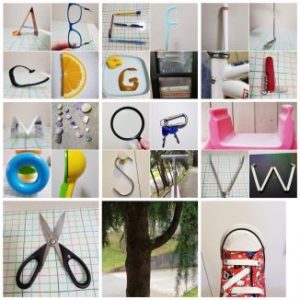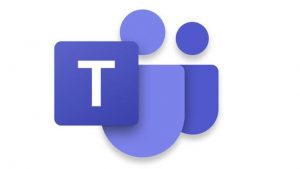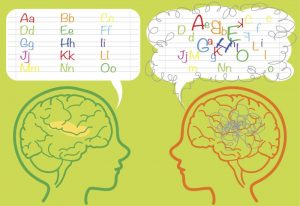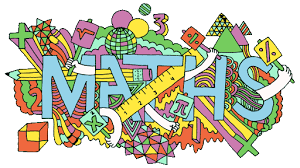Update on Unit “It’s All in the Design” – September 28th
Hello Everyone!
We have been gradually unpacking our unit and getting used to our permanent weekly schedule! Here’s a quick update of what we are doing!
Schedule:
We now have a permanent schedule, and Division 5 will have music on Tuesday and Friday mornings, as well as Thursday afternoons. We will have gym before lunch on Tuesday and Thursday, as well as Wednesday after recess.
Library will be scheduled at a later date, but Ms. Ho has already come to our classroom to do a mobile library visit! Students may check out books for 2 weeks at a time. They can have up to 4 books. Books from the Suncrest Library can go home and will be stored in backpacks. Books from Ms. D’s personal library need to stay in the classroom, please. Thank you!
We now have our user names and passwords to access both of these tools! Please make sure you test MS Teams access at home and see if all passwords work. If they do not, let me know. Right now, there is not very much on MS Teams because we are just setting it up. We do have 2 posts in our e-portfolios, though, so we welcome parents to come and check out the entries and to provide feedback.
E-Portfolio entries are used for checking in with student understandings throughout the year. I look forward to reading them as we get going with the unit. E-Portfolio entries need to:
- have a title, provided by Ms. D,
- have a category marked in the side bar,
- include the questions Ms. D asked, with questions written in bold,
- be edited before publishing,
- have answers to the questions with complete sentences and detail to show understandings and deeper thinking, and
- have a picture of student work or of a related image from the internet (pictures need to be sized correctly by editing them once uploaded, and please do not post pictures with copyright symbols on them.)
Language Arts:
In connection with our discussion of the concept STRUCTURE, we are looking at the structure of effective paragraphs and sentences, the structure of language, and the structure of different writing forms. How does the FORM of the writing relate to its FUNCTION in terms of communicating ideas to others?
Students now have a blue duotang for Vocabulary Study, with fun language lists and activities by Ian Byrd, who is a fantastic education consultant specializing in gifted curriculum. Our first study of words is around HOMOPHONES, and we have several tasks to complete. Students can choose which one they would like to try doing each day over the next couple of weeks. We will share their favourite task on E-Portfolios and then move on to the next challenge list. We do not have spelling tests, but this is a way of looking more closely at language.
In addition, I am introducing them to new words through two new books of mine The Dictionary of Difficult Words and The Lost Words. We also had a great discussion about the many languages in our classroom, the universal phonetic alphabet used by linguists to structure and identify human languages, and the different alphabets used to construct human language. More to come as we unpack writing and language structure.
Everyone also now has a green duotang for Reading Around the World. Your child can use this list as an optional way to structure their home and class reading. There are prizes for traveling around the world through reading! Good luck!
Science:
How do designers use scientific knowledge to make things? How is FORM related to function? For example, today we looked at the different chairs in our classroom. Why are they designed the way they are, with specific back rests, textures, supports, and materials? If we made our own chair, which features would we change or add to serve our own needs? We also looked at different kinds of sports balls. Why is a basketball spherical and rough? Why is a football streamlined and leather?
These discussions are helping us understand how FORM FOLLOWS FUNCTION!
We are investigating states of matter, molecular structure, energy transfer, Newton’s laws, and other science knowledge a designer may take into mind when creating something like a large building or even a simple chair.
- With our rumblebots, we investigated energy transfer through vibrations, and we watched a video to learn how they travel down the track!
- Last week, we used slinky toys to look at compression waves and how energy travels. Watch the slinky challenge here, and the answer to the challenge at this site.
- We will be using ramps and marbles to talk about how Newton’s first law and how gravity, height, and friction affect a moving object.
- We hope to watch Bill Nye’s video on Structure, to further discuss FORM FOLLOWS FUNCTION!
We will also discuss, how is the anatomical structure of an organism designed to serve the organism’s function? We will be looking at our own skeletons and parts of the body, how they are designed, and how they help us to be the mobile humans we are! We will also look at a large visual book of animal skeletons, and to try and guess the animals’ names just by looking at their bone structure. How do bone structures depend on animal behaviour, habitat, size, food, and predators.
Finally, we will also touch upon the STRUCTURE of our lives based upon the science of the sun, moon, and our placement in the galaxy. We will discuss the Goldilocks Principle, as well as why other planets do not have the life Earth does.
I look forward to our discussions and the projects to follow, during which students can get more creative about areas of passion that are related to our unit.
As we look at the concept of STRUCTURE, we will ask deeper questions about the structure of mathematics. For example: What are the different kinds of numbers? Why is math organized the way it is? How does looking for patterns help us better understand multiplication and division?
We do not have one textbook to work out of in math. Instead, students will be completing activities from multiple sources. Some of our deeper thinking around numeracy, patterns, and how the brain understands math will come from the work of Jo Boaler at Stanford University. Students have already been watching videos from her YouCubed Inspirational Math series, which discuss such things as:
- great math is more about deep thinking versus speed,
- cementing ideas about math in the brain involves something called “brain crossing” in which two different kinds of activities are done at once, such as drawing and visualizing mathematical ideas,
- mathematics is about understanding and noticing patterns, and
- mathematicians who struggle with big ideas play the role of both convincers and skeptics — you need someone who tries to prove a theory, but you also need someone to ask good questions so the work is of quality.
We will also explore STRUCTURE of mathematics, as well as patterns and multiplication, through a variety of math games such as Prime Climb, Math Fluxx, and Sumoku. This will allow us to have fun and employ critical-thinking, creative-thinking, and communication skills while accessing math curricular content and competencies.
In another week, students will be receiving a list of mini projects and tasks to complete independently or in small groups. The list will have a due date; however, it is meant to provide lots of choice (as activities do not have to be completed in order), and students can work at their own pace within the larger deadline. This list will be kept in their binders.
Today, students did an exploration of Pascal’s Triangle. You may want to see it in their binder and ask them questions about the patterns they found.
After the unit ends, we will do a math project! More information to come on that soon!
Socials:
With elections coming up in both our province and in the US, there is an excellent opportunity to discuss government and the structure of municipal, provincial, and federal services that are set up to meet the needs of our large population. More to come about this soon.
Class Meeting:
Speaking of structure and governance, the way we introduce new ideas and discuss the ways to make student proposals happen is through class meeting! So far, we have a Halloween Party Committee formed. While we can’t have any food or treats brought to school, we can have a party! We will have class meeting on Tuesdays after music if you have ideas you would like the class to consider. If you want something to happen, speak up, or make a written proposal for the agenda before we start a meeting!
Personal Awareness and Responsibility Competency:
During this unit we will focus on the core competency of Personal Awareness and Responsibility. You can read about the competency here!
We worked together to make essential agreements as a class about our values and what kind of learning environment we want to have in MACC 4/5, which is directly related to taking responsibility for our own learning space, our relationships with other students, and our own self-management skills.
We had a personal awareness discussion and game about the Comfort Circle and in our journals began to identify characteristics of our own personal comfort zone, learning zone, and panic zone. The best learning happens in the “LEARNING ZONE” when you are slightly uncomfortable, but not too much. Great learning involves taking risks and trying new things!
We also talked about how learning is a lifelong journey and brainstormed a LIFE RUBRIC in our journals of activities we feel we are beginning, developing, proficient at, or extending/expert at, in relation to the proficiency scale used for assessment. It is okay to be developing a skill, and we do not have to be perfect at everything! Ms. D shared her own Life Rubric ideas. Even adults have ongoing learning they can do!
Okay, more to come, but…..
Too much for one entry, but more to come this week as we engage in more experiments, build some things, talk about a Skill Share Project, do some fun research, and more!
Have a great week and don’t forget Terry Fox Run on Friday! The link to support Terry Fox Foundation is on the Suncrest Website.
Thank you!
Ms. D





